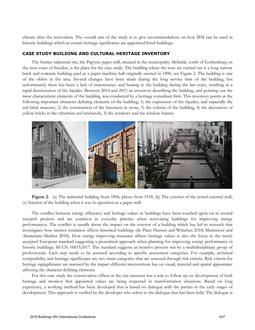Description
Conventional thermal insulation materials, such as fiber glass and EPS, demand a thick layer of insulation to reach the energy targets. Super insulation materials (SIM) are thermal insulation components with a 3-10 times higher thermal resistance than conventional insulation materials, such as vacuum insulation panels (VIP) and aerogel blankets (AB). They are efficient in increasing the thermal performance of walls when retrofitting, without significantly tampering with the wall thickness. Usually other measures such as changing windows or heating system are preferred before adding insulation to the walls, but to improve the thermal comfort and energy performance further, interior insulation is a possible alternative. In this study, an industrial building from 1896 with a 470 mm (1.5 ft) homogenous brick masonry wall is investigated regarding the hygrothermal performance and thermal inertia of the wall with interior insulation. Earlier research has shown that interior insulation decreases the drying-out capacity of the exterior wall and increases the risk for freeze-thaw damages in brick walls. In this study measurements from field investigations and simulations of a homogenous brick wall with 20 mm (0.8 in) interior VIP and 20 mm (0.8 in) aerogel blankets are compared to a non-insulated reference wall. The measurements showed that the wall was wet throughout the measurement period while the measured U-value was reduced with 82-83% for the AB and 81-84% for the VIP layers.
Citation: Thermal Buildings XIV 2019
Product Details
- Published:
- 2019
- Number of Pages:
- 9
- Units of Measure:
- Dual
- File Size:
- 1 file , 1.2 MB
- Product Code(s):
- D-Bldgs19-068




